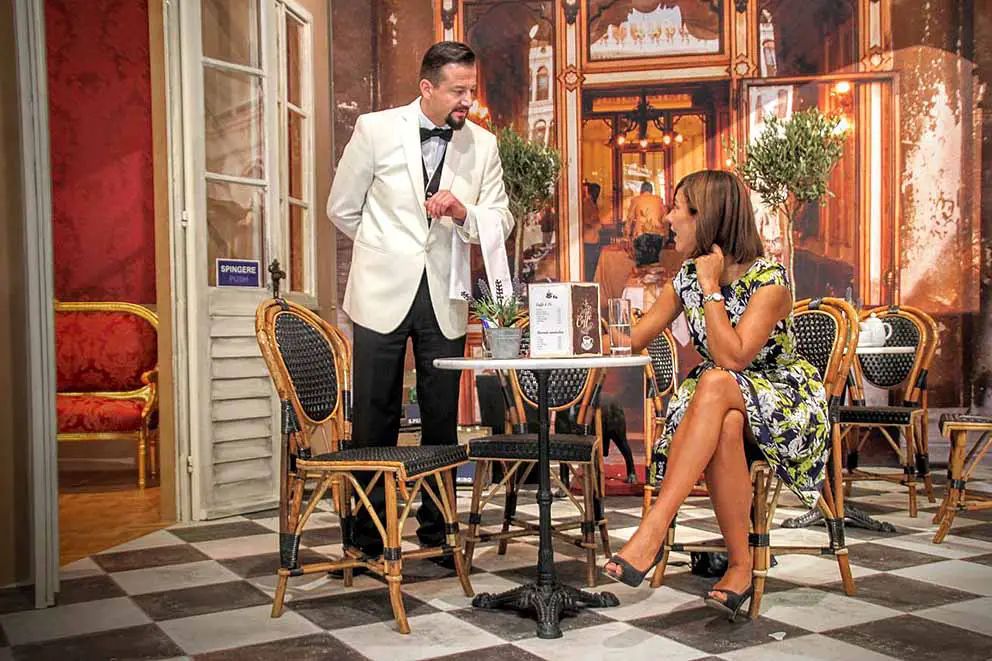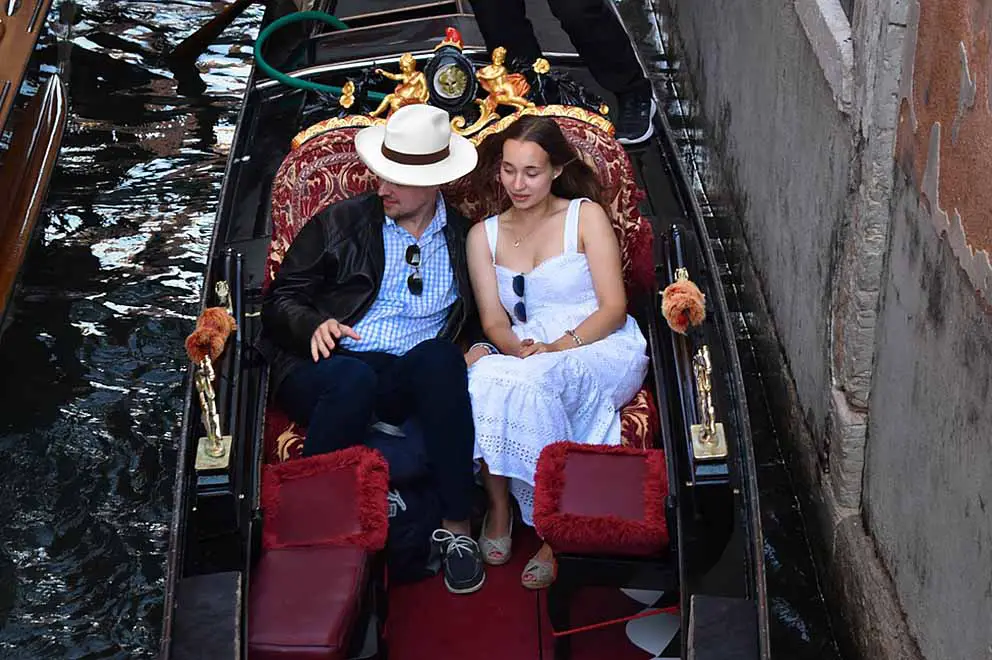According to a new study, 70 percent of the European population speaks more than one language, but in the United States, only 20 percent do. For those who speak a language other than English, Spanish is at the top of the list. However, Italian is the fifth-most-taught language in the world, used by roughly 65 million people worldwide.
Known as the “language of romance,” Italian has many different dialects. However, people anywhere in the country understand the common Italian phrases provided below. Whether you plan to make a holiday or wether you want to live in Italy or simply want to learn a new language, Italian is an excellent choice. It’s a language full of love, life and romance, just like the wonderful Italians themselves. Start by focusing on the pronunciation of words, followed by working on the accent.
Table of Contents
- Useful Italian Phrases for every Day
- Common Italian Phrases When Traveling
- Useful Phrases for Dining Out
- Shopping in Italian
- Clothes Shopping in Italy
Useful Italian Phrases for every Day
The following are some of the most common Italian phrases to start learning if you plan to travel or move to Italy.
- Parla Inglese? – Do you speak English?
- Parlo Inglese – I speak English.
- Nonparlo bene I’italiano – I don’t speak Italian well.
- Come ti chiami? – What is your name?
- Mi chiamo Chris. — My name is Chris.
- Piacere – Pleasure, nice to meet you.
- Mi scusi – Excuse me.
- Permesso – Excuse me (when edging your way through a crowd.)
- Non capisco – I don’t understand.
- Capisco grazie – I understand.
- Non lo so – I don’t know.
- Si, I o so – Yes, I know.
- Non so dove sia – I don’t know where it is
- Mi sono perso (male) Mi sono persa (female) – I’m lost.
- Può ripetere, per cortesia? – Can you repeat, please?
- È bello, or è bellissimo – It’s beautiful, or it’s very beautiful.
- Vado a casa – I’m going home.
- Grazie – Thank you in Italian.
- Con piacere – With pleasure / You’re welcome in Italian.
- Buon giomo, buon pomeriggio, buona sera – Good morning, good afternoon, good evening
- Salve – Hello
- Arrivederci – Goodbye
- In bocca al lupo – Good luck (one of the most commonly used phrases in Italy)

Common Italian Phrases When Traveling
To get around different parts of Italy without becoming lost or if you need help from the police or ambulance, use the following Italian phrases.
- Sto cercando il mio Albergo – I’m looking for my hotel.
- Dove si trova la stazione ferroviaria? – Where is the train station?
- Come si arriva all’aeroporto – How do I get to the airport?
- Quanto è lontano? – How far is it?
- Ho bisogno di un taxi – I need a taxi.
- A destra or a sinistra – To the right or to the left
- Ho bisogno della polizia – I need the police.
- Ho bisogno di un’abulanza – I need an ambulance.

Useful Phrases for Dining Out
In Italy, you will enjoy fantastic meals. Whether visiting a small café or fancy restaurant, expect mouth-watering cuisine and excellent service. Here are some common Italian phrases to use at the restaurant.
- Avete un tavolo per due personne? – Do you have a table for two people?
A host or hostess will greet you upon arriving at a restaurant in Italy. Using the above phrase, you can request a table for two (“due”) or another size of group by switching out the numbers. One is “uno,” three “tre,” four “qualtro,” five “cinque,” six “sei,” seven “sette,” and eight “otto.” If the restaurant offers both indoor and outdoor dining, as many do, you would use one of these phrases: “all’interno” for inside dining or “all’aperto” for outside. - Potrei vedere il menu? – May I see the menu?
In Italy, it is common for restaurants to display their menus outside. That way, people can decide if they want to dine at a specific establishment or move on to a different place. If you do not see a menu, you can ask for one before the host or hostess seats you. While that might seem rude in America, it is standard practice in Italy. - Cosa ci Consiglia? – What would you recommend?
After taking your seat, you might ask your waiter, “cameriera” for female and “cameriere” for male, for recommendations. Because most restaurants in Italy have a house special, this is an excellent way to have the best meal possible. When the waiter recommends something you like, respond with “Scelgo questo,” which translates to “I’ll choose this.” - Posso assaggiare questo (item) per favore? – Can I sample this (item) please?
Another unique custom in Italy is that before committing to a full dish or bottle of wine, you can request to sample it first. In place of the word “(item),” use words that apply, such as “vino” for wine, “salame” for salami, “piatto” for dish, “formaggio” for cheese, “gusto di gelato” for ice cream, and so on. - Un litro di vino della casa, per favore – A liter of the house wine, please.
After sample wine, you can then order a liter to enjoy with your meal, another custom in Italy. In fact, drinking wine with a meal is an important part of the culture. For red wine, you would say, “un litro di vino rosso della casa, per favore,” and for white wine, “un litro di vino bianco della casa, per favore.” - L’acqua naturale or l’acqua frizzante – Natural or sparking water
At restaurants in Italy, your waiter will first ask if you prefer natural or sparkling water. Simply use one of the two phrases in response to what you prefer. - Sono vegetariano – I’m vegetarian
Although lasagna (“le lasagna”) with meat is one of the most popular dishes in Italy, if you are a vegetarian, you can inform your waiter by saying “vorrei.” - Due cappuccino, per favore – Two cappuccinos, please.
After a good meal it is common in Italy to enjoy nice cup of coffee.
Shopping in Italian
Besides incredible food, Italy has some of the most amazing shops. While there, you will discover that open-air markets are popular, also called mercato. There, you can buy collectibles, clothing items, antiques, and even fresh fruits and vegetables. Regardless of what you want to shop for, using the right vocabulary will enhance the overall cultural experience.
- Quanto? – How much?
- Accettate carte di credito? – Do you accept credit cards?
- Accettate dollari Americani? – Do you accept American dollars?
- Nient’altro – Nothing else.
- Mi scusi, quanto costa? – Excuse me, how much does it cost?
- Dove sono i camerini? – Where are the changing rooms?
You can even narrow your search for specific types of shops based on what you want to buy.
- Libreria (lee-bray-ree-a)– Bookstore
- Alimentari (alee-mayn-taree) or supermercato (oopayr-mayr-kato) – Grocery store or supermarket
- Pasticceria (pahs-teech-cheh-ree-ah) – Bakery
- Cioccolata (choh-koh-lah-tah) – Chocolate
- Cena (Che-nah) – Dinner
- Vino (Vee-noh) – Wine
- Pane (pah-neh) – Bread
- Formaggio (fohr-mahj-joh) – Cheese
- Verdure (vehr-doo-rah) – Vegetables
Clothes Shopping in Italy
People around the globe admire the fashion style of the Italian people. As a country known for its high-quality apparel, you will have no problem finding department stores. When shopping for clothes, you can rely on some of the following phrases.
- Abbigliamento (ab-beelya-maynto) – Clothing store
- Grandi magazzino (grahn-deh mah-gaht-tsee-noh) – Department store
- Camicia (kah-mee-chah) – Shirt
- Capello (kahp-pehl-loh) – Hat
- Cappotto (kahp-poht-toh) – Coat
- Gonna (gohn-nah) – Skirt
So, there you are. Having mastered these common Italian phrases will give you a headstart for your next leisure or business trip to Italy!



